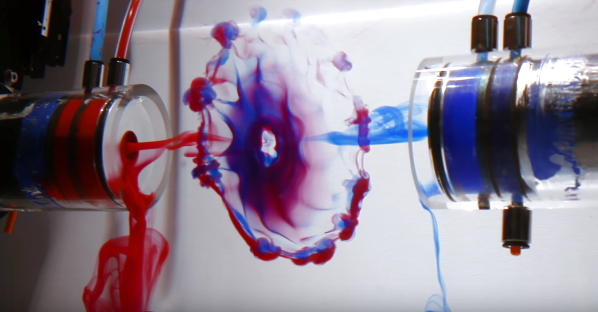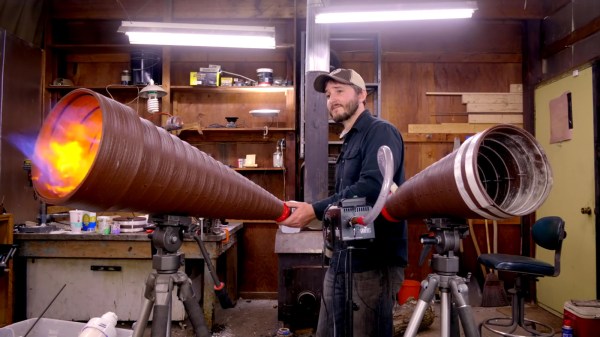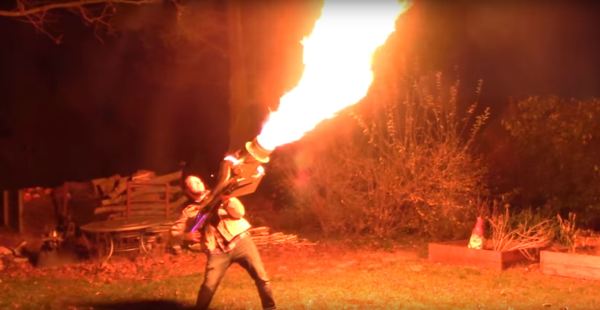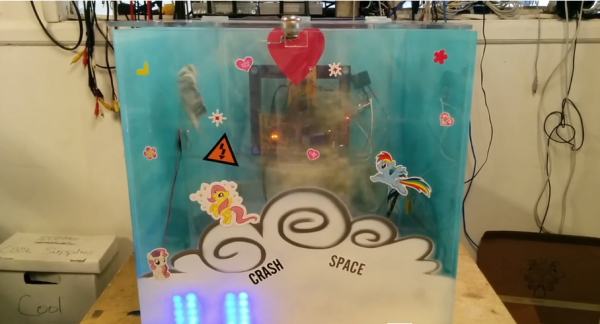A tornado can be an awe-inspiring sight, but it can also flip your car, trash your house, and otherwise injure you with flying debris. If you’d like to look at swirling air currents in a safer context, you might appreciate this tornado tower build from [Gary Boyd].
[Gary]’s build was inspired by museum demonstrations and the tornado machine designs of [Harald Edens]. His build generates a vortex that spans 1 meter tall in a semi-open cylindrical chamber. A fan in the top of the device sucks in air from the chamber, and exhausts it through a vertical column of holes in the wall of the cylinder. This creates a vortex in the air, though it’s not something you can see on its own. To visualize the flow, the cylindrical chamber is also fitted with an ultrasonic mist generator in the base. The vortex in the chamber is able to pick up this mist, and it can be seen swirling upwards as it is sucked towards the fan at the top.
It’s a nice educational build, and one that’s as nice to look at as it is to study. It produces a thick white vortex that we’re sure someone could turn into an admirable lamp or clock or something, this being Hackaday, after all. In any case, vortexes are well worth your study. If you’re cooking up neat projects with this physical principle, you should absolutely let us know!



















